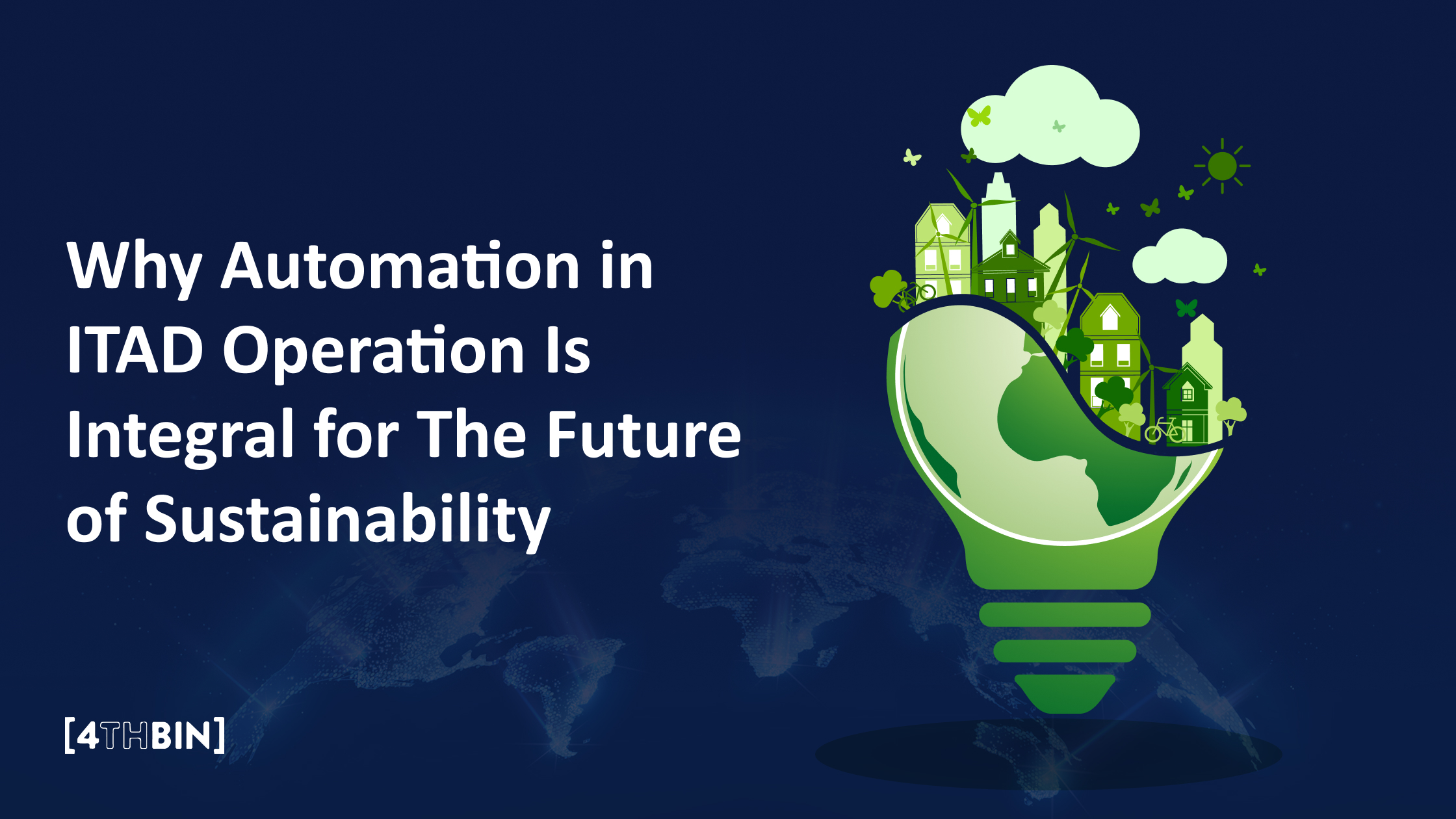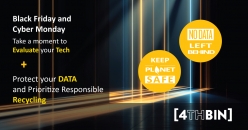How to Dispose of Power Banks Safely?
You’re packing for a trip and rummaging through your drawer, only to find a tangled mess of old cables, chargers, and a power bank that hasn’t worked in years. Sound familiar?
With smartphones, tablets, smartwatches, and headphones becoming daily essentials, the number of electronic devices we rely on has surged. By 2025, the number of mobile devices worldwide is expected to reach 18.22 billion. A household now, on average, has 21 connected devices, creating a growing dependence on power banks to keep everything charged and running smoothly.
While power banks have become a lifeline for staying connected, their widespread use raises an important question: what happens to them when they no longer work?
Tossing it in the trash might seem the simplest solution, but it’s far from the safest or most responsible. In this blog, we’ll guide you on how to dispose of your power banks safely and responsibly, turning an overlooked task into a meaningful step toward sustainability.
Signs That You Must Retire Your Power Bank
While power banks help charge your devices on the go, like all electronic gadgets, they have a limited lifespan. Recognizing when it’s time to retire your power bank is crucial for your safety and the environment. Here are the most common signs that your power bank may need to be disposed of safely:
Bulging or Swelling
A clear indicator of a failing power bank is a change in its shape. If you notice that your power bank has become swollen or appears to bulge, it’s a sign that the internal battery has deteriorated. This swelling can occur due to chemical reactions inside the battery, often caused by overcharging, physical damage, or exposure to extreme heat. A bulging power bank is a serious hazard as it could lead to leakage, fire, or even an explosion. It’s essential to stop using it immediately and handle it carefully to prevent further risks.
Overheating During Use
While it’s normal for power banks to warm up slightly when in use or charging, excessive heat is a red flag. If your power bank feels unusually hot to the touch, especially during routine use, it could indicate internal damage or a malfunctioning battery. Overheating not only shortens the lifespan of the device but also increases the risk of fire. Using an overheating power bank is unsafe and could result in further damage or accidents.
Inability to Hold a Charge
A power bank that no longer holds a charge or drains unusually fast is another clear sign it’s nearing the end of its life. Over time, the internal battery loses its ability to store energy efficiently, making the power bank unreliable. If your power bank can no longer charge your devices as it once did or won’t charge at all, consider disposing of it.
If your power bank shows any of these signs, it’s time to dispose of it responsibly.
Why Can’t You Throw a Power Bank in the Trash?
When a power bank reaches the end of its life, tossing it in the trash might seem convenient, but it’s far from safe or responsible. Power banks are built with complex components that can pose serious risks when not disposed of properly.
At the core of every power bank is a lithium-ion battery, an efficient yet highly reactive energy storage system. These batteries are surrounded by circuit boards and materials like cobalt, nickel, and other metals, some of which are toxic if mishandled. The outer casing and other parts often include durable plastics that don’t decompose naturally, adding to the waste problem.
When discarded in regular trash, these materials don’t just vanish—they create hazards at every disposal stage. Over time, chemicals from batteries can seep into the soil and water, contaminating ecosystems and posing long-term risks to human and animal health. Lithium, nickel, and cobalt are harmful, polluting groundwater and making clean-up efforts expensive and time-consuming.
Additionally, lithium-ion batteries are prone to overheating, primarily if crushed or punctured in a landfill. This can lead to dangerous fires or even explosions, which are difficult to control and put waste management workers at risk. Beyond the immediate dangers, throwing power banks in the trash wastes valuable materials like metals that could be recovered and reused. Recycling these components reduces the need to mine raw materials, conserve energy, and reduce environmental impact.
So, never discard your power banks carelessly. The potential risks to safety and the environment are far too serious to overlook. Instead of sending your power bank to a landfill, choose a safer, more responsible option: recycle it.
How to Dispose of Power Banks Safely?
Disposing a power bank safely doesn’t have to be complicated, but it requires care and responsibility. Here are a few ways to ensure your old power bank is handled in a way that protects you and the environment:
Check Local Regulations
Start by understanding the e-waste disposal rules in your area. Different regions have specific guidelines for handling electronic waste, including power banks, to minimize environmental impact and ensure public safety. Find your city or county’s e-waste policies online, or contact your local waste management facility for precise instructions. Knowing these regulations will help you avoid fines or penalties while ensuring your power bank is disposed of responsibly.
Locate E-Waste Recycling Centers
The best way to dispose of a power bank is to take it to a certified e-waste recycler, such as 4THBIN. These facilities are equipped to safely handle and recycle the hazardous materials found in power banks. To find a recycling center near you, search online for certified e-waste drop-off locations or use resources like local government websites. Many recyclers also offer pick-up services, making the process even more convenient.
Use Retailer Recycling Programs
Many electronics retailers and manufacturers, including power banks, offer recycling or take-back programs for old devices. Check with the brand of your power bank or visit local stores like electronics retailers or big-box stores to see if they participate in such programs. These initiatives are often free and ensure your device is recycled safely and environmentally friendly.
Donate or Sell
If your power bank is in good working condition but you are ready to upgrade, consider donating it to someone who might need it. Many schools, charities, and community organizations accept functional electronics as donations. Alternatively, you could sell it online through eBay, Craigslist, or Facebook Marketplace. By extending the life of your power bank, you reduce waste and help someone else use a still-functional device.
How to Prepare Your Power Bank for Disposal
Before disposing of your power bank, you must take the necessary steps to ensure safe handling. Power banks contain lithium-ion batteries and electronic components that can be hazardous if incorrectly handled. Proper preparation protects you and ensures the recycling process is efficient and safe.
Check the Power Bank’s Condition
Examine your power bank for any visible signs of damage, such as swelling, leakage, or physical cracks. Handle it carefully if it shows any of these signs, as damaged power banks are more likely to pose safety risks. Do not attempt dismantling a visibly damaged power bank yourself—instead, take it directly to a certified e-waste recycling center.
Discharge the Power Bank
If your power bank is still operational, discharge it fully before disposal. Use it to charge your devices until it is entirely out of power. A discharged battery poses less risk of overheating or short-circuiting during transport or recycling.
Remove the Battery
Some power banks are designed to allow the removal of their internal battery, while others are sealed units. If your power bank allows safe battery removal, carefully open the casing and remove the lithium-ion battery. Be sure to follow any instructions the manufacturer provides to avoid damaging the battery or other components.
- Important Note: Batteries require a separate recycling process because they contain hazardous materials like lithium and cobalt. Do not dispose of the battery in the trash or standard recycling bins. Instead, take it to a battery-specific recycling facility or drop-off point, often found at electronics stores or community collection programs.
Insulate the Battery Terminals
Always insulate the terminals to prevent accidental short circuits, whether the battery is inside the power bank or removed. Cover the terminals with electrical tape or any non-conductive adhesive tape. This step reduces the risk of sparks, overheating, or fires during transport and recycling.
Place the Power Bank in a Safe Container
Once the power bank or its components are disposed of, place them in a non-metallic, sturdy container. Avoid using bags or boxes that could tear or collapse. If you’re handling multiple batteries, ensure the terminals are insulated, and do not allow them to touch each other during transport.
Recycle Responsibly
Take the prepared power bank and battery to certified e-waste recyclers, who manage electronic waste safely and sustainably. Certifications like R2v3 (Responsible Recycling) ensure strict standards for handling hazardous materials, such as lithium-ion batteries, to prevent risks like chemical leaks, fires, and environmental contamination. These recyclers also recover valuable materials like metals and plastics for reuse, reducing waste and conserving resources.
By choosing certified recyclers, you ensure your e-waste is processed ethically and sustainably. Trusted organizations like 4THBIN adhere to these high standards, making responsible recycling accessible and effective.
Tips for Extending the Life of Your Power Bank
![]()
Follow these tips to keep your power bank in excellent condition and reduce the need for frequent replacements:
- Avoid Overcharging: Unplug your power bank once it reaches 100% to prevent unnecessary heat buildup, which can degrade the battery over time.
- Prevent Deep Discharging: Recharge your power bank before it drops below 20% to maintain optimal battery health. It is ideal to keep it between 20% and 80% charged.
- Store in Cool, Dry Places: Do not expose your power bank to extreme temperatures. Keep it stable, away from direct sunlight, heat sources, and moisture.
- Use Quality Charging Cables and Adapters: Always use the original cable and adapter or certified replacements. Avoid fast chargers unless your power bank is designed explicitly for quick charging.
- Inspect Regularly: Check your cables and connectors for signs of damage, such as fraying or exposed wires. Replace any damaged accessories to ensure safe and effective charging.
- Charge Regularly if Not in Use: If you’re not using your power bank for an extended period, recharge it occasionally to keep the battery active. A full discharge over time can harm its lifespan.
By following these simple tips, you can extend the life of your power bank, save money, and contribute to reducing electronic waste.
Whether you recycle, donate, or participate in a retail program, safely disposing of your power bank is a simple yet impactful way to reduce environmental harm. Take a few moments to choose the right option, and you’ll contribute to a cleaner, safer planet.
Recycle Your Power Banks Responsibly with 4THBIN
![]()
Are old or damaged power banks piling up and taking up space? With 4THBIN’s e-recycling solutions, you can ensure they are disposed of securely, safely, and with the environment in mind.
With over a decade of experience, 4THBIN has partnered with more than 10,000 organizations, including Fortune 100 companies and small businesses, to transform e-waste challenges into opportunities.
Our certified data destruction services ensure that sensitive information is completely safeguarded, eliminating the risks of data recovery associated with improper disposal. From secure RemoteReturn mail-in options to convenient on-site collection, our customizable solutions allow you to choose the plan that best suits your needs.
Let us take care of your old power banks.
Contact Us










